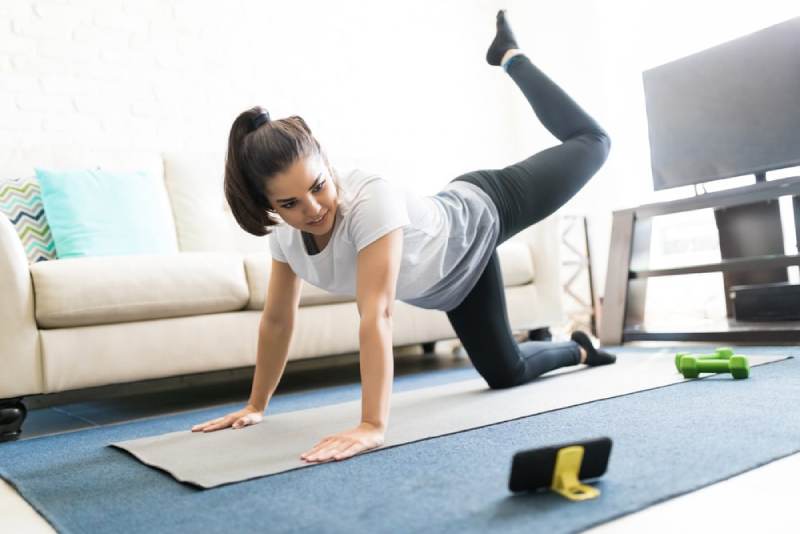Diabetes may sound like a roadblock to an active life, but the truth is, exercise is one of your most powerful allies in managing this condition. Regular physical activity not only improves your overall health and well-being, but it also plays a crucial role in:
- Lowering blood sugar levels: Exercise helps your body utilize glucose (sugar) from your bloodstream more effectively, leading to better blood sugar control.
- Increasing insulin sensitivity: Your cells become more receptive to insulin, allowing it to work more efficiently and regulate blood sugar levels.
- Promoting weight management: Maintaining a healthy weight or losing even a modest amount can significantly improve diabetes management.
- Reducing the risk of diabetes complications: Exercise helps reduce the risk of heart disease, stroke, and nerve damage, all potential complications of diabetes.
- Boosting energy levels: Regular physical activity can improve your energy levels and combat fatigue, a common symptom of poorly controlled diabetes.
- Enhancing mood and reducing stress: Exercise releases endorphins, natural mood-lifters that can combat stress and depression, both common in people with diabetes.
This article dives into the world of effective exercises for diabetes management, empowering you to find activities you enjoy and incorporate them into your daily routine.
Understanding Different Types of Exercise
For optimal diabetes management, it’s recommended to include a combination of different exercise types in your routine:
1. Aerobic Exercise (Cardio):
- Benefits: Aerobic exercise, also known as cardio, strengthens your heart and lungs, improves blood flow, and helps burn calories. It’s particularly beneficial for lowering blood sugar levels.
- Examples: Brisk walking, running, swimming, cycling, dancing, elliptical training.
- Recommendations: Aim for at least 150 minutes of moderate-intensity aerobic exercise per week or 75 minutes of vigorous-intensity exercise. You can break this down into smaller chunks throughout the week, like 30 minutes most days.
2. Strength Training:
- Benefits: Strength training helps build and maintain muscle mass. Muscle tissue plays a crucial role in glucose metabolism, aiding in blood sugar control. Additionally, strength training improves bone density, reduces the risk of injuries, and boosts metabolism.
- Examples: Weightlifting (free weights or machines), bodyweight exercises (push-ups, squats, lunges), resistance bands.
- Recommendations: Aim for strength training exercises involving all major muscle groups at least twice a week. Start with lighter weights and gradually increase intensity as you get stronger.
3. Flexibility Exercises:
- Benefits: Flexibility exercises help improve your range of motion, reduce stiffness and pain, and enhance overall coordination. These benefits are particularly important for people with diabetes, who are more susceptible to nerve damage and joint problems.
- Examples: Yoga, Pilates, tai chi, gentle stretching routines.
- Recommendations: Aim for flexibility exercises most days of the week. Hold each stretch for 20-30 seconds and repeat 2-3 times.
Finding Your Exercise Fit: Activities for Every Preference
The key to sticking with an exercise routine is finding activities you enjoy. Here are some ideas to inspire you:
For the Outdoor Enthusiast:
- Brisk walking/hiking: Explore nature trails or your neighborhood while getting your daily dose of cardio.
- Cycling: Enjoy the scenery and a great workout by cycling outdoors.
- Swimming: This low-impact exercise is easy on your joints and perfect for hot summer days.
- Team sports: Join a recreational sports team for a fun and social way to get active.
For the Homebody:
- Online fitness classes: Numerous online platforms offer a wide variety of fitness classes, from yoga and dance to HIIT (High-Intensity Interval Training) workouts.
- Home workout routines: There are countless free workout routines available online that require minimal equipment (bodyweight exercises) or utilize household items.
- Dance fitness: Get your groove on with dance fitness videos or classes. It’s a fun way to break a sweat and burn calories.
- Active video games: Certain video games incorporate physical activity, making exercise a little more entertaining.
For the Social Butterfly:
- Group fitness classes: Join a group fitness class like Zumba, spinning, or aerobics for a fun and motivating experience.
- Partner exercises: Find a friend or family member to exercise with. You can hold each other accountable and make it more enjoyable.
- Sports teams: Participate in a recreational sports league for a social and competitive way to get active.
- Walking or hiking groups: Join a local walking or hiking group to explore new trails and meet new people.
Safety Considerations for Exercise with Diabetes
While exercise is incredibly beneficial for diabetes management, some precautions are necessary to ensure a safe and enjoyable experience. Here’s what to keep in mind:
1. Consult Your Doctor Before Starting a New Exercise Program:
- Discuss your current health status, diabetes management plan, and any potential limitations you might have.
- Get clearance for exercise, especially if you have any complications like heart disease or nerve damage.
- Your doctor may recommend specific exercises or modifications based on your individual needs.
2. Monitor Your Blood Sugar Levels Before, During, and After Exercise:
- This is especially important if you take insulin or medications that can cause low blood sugar (hypoglycemia).
- Aim for a blood sugar level between 100-140 mg/dL before starting exercise.
- Have a plan for treating low blood sugar during or after exercise, such as carrying glucose tablets or juice.
- Inform your doctor if you experience any unusual symptoms during exercise.
3. Stay Hydrated:
- Drink plenty of water before, during, and after exercise to prevent dehydration.
- Aim to drink 16-20 ounces of water 2-3 hours before exercise.
- Sip water throughout your workout, especially in hot weather or during strenuous activity.
4. Wear Proper Clothing and Shoes:
- Choose comfortable, breathable clothing that allows for freedom of movement.
- Wear well-fitting, supportive shoes that are appropriate for your chosen activity.
- Avoid cotton socks, which can retain moisture and increase risk of blisters.
5. Warm Up and Cool Down:
- Warm-up: Start with 5-10 minutes of light activity like walking or gentle stretches to prepare your body for exercise.
- Cool Down: After your workout, spend another 5-10 minutes on cool-down activities like walking and static stretches to help your body recover.
6. Be Aware of Your Body and Listen to Its Signals:
- Pay attention to any pain or discomfort during exercise. Stop if you experience any sharp pain, dizziness, or shortness of breath.
- Rest when you need to and gradually increase the intensity and duration of your workouts as your fitness level improves.
7. Manage Your Blood Sugar During Exercise:
- If you’re exercising for longer than 30 minutes, you may need to consume a small carbohydrate snack to prevent hypoglycemia.
- Talk to your doctor about the best type and amount of carbohydrate to consume during extended exercise sessions.
8. Manage Your Insulin Regimen:
- If you take insulin, your doctor may need to adjust your dosage based on your exercise routine.
- Discuss any potential adjustments with your doctor to ensure optimal blood sugar control.
9. Be Aware of Environmental Factors:
- Exercise in a well-ventilated area, especially during hot or humid weather.
- Avoid exercising outdoors during extreme weather conditions.
- Apply sunscreen and wear protective clothing if exercising outdoors in the sun.
10. Maintain a Positive Attitude
- Focus on the benefits of exercise and celebrate your accomplishments.
- Don’t be discouraged if you can’t exercise every day. Consistency is key, even if it’s just small bouts of activity throughout the day.
- Find exercise buddies or join a support group to stay motivated and share your journey.
Conclusion
Exercise is a powerful tool for managing diabetes and improving your overall health and well-being. By following these safety considerations, finding activities you enjoy, and incorporating them into your routine, you can make exercise a positive and empowering part of your life with diabetes. Remember, consult your doctor before starting a new exercise program, and prioritize your safety and enjoyment while reaping the numerous benefits of physical activity.

 Diabetology2 weeks ago
Diabetology2 weeks ago
 Diabetology1 week ago
Diabetology1 week ago
 Diabetology5 days ago
Diabetology5 days ago
 Diabetology6 days ago
Diabetology6 days ago
 Diabetology6 days ago
Diabetology6 days ago
 Diabetology3 days ago
Diabetology3 days ago
 Diabetology3 days ago
Diabetology3 days ago
 Diabetology1 day ago
Diabetology1 day ago















